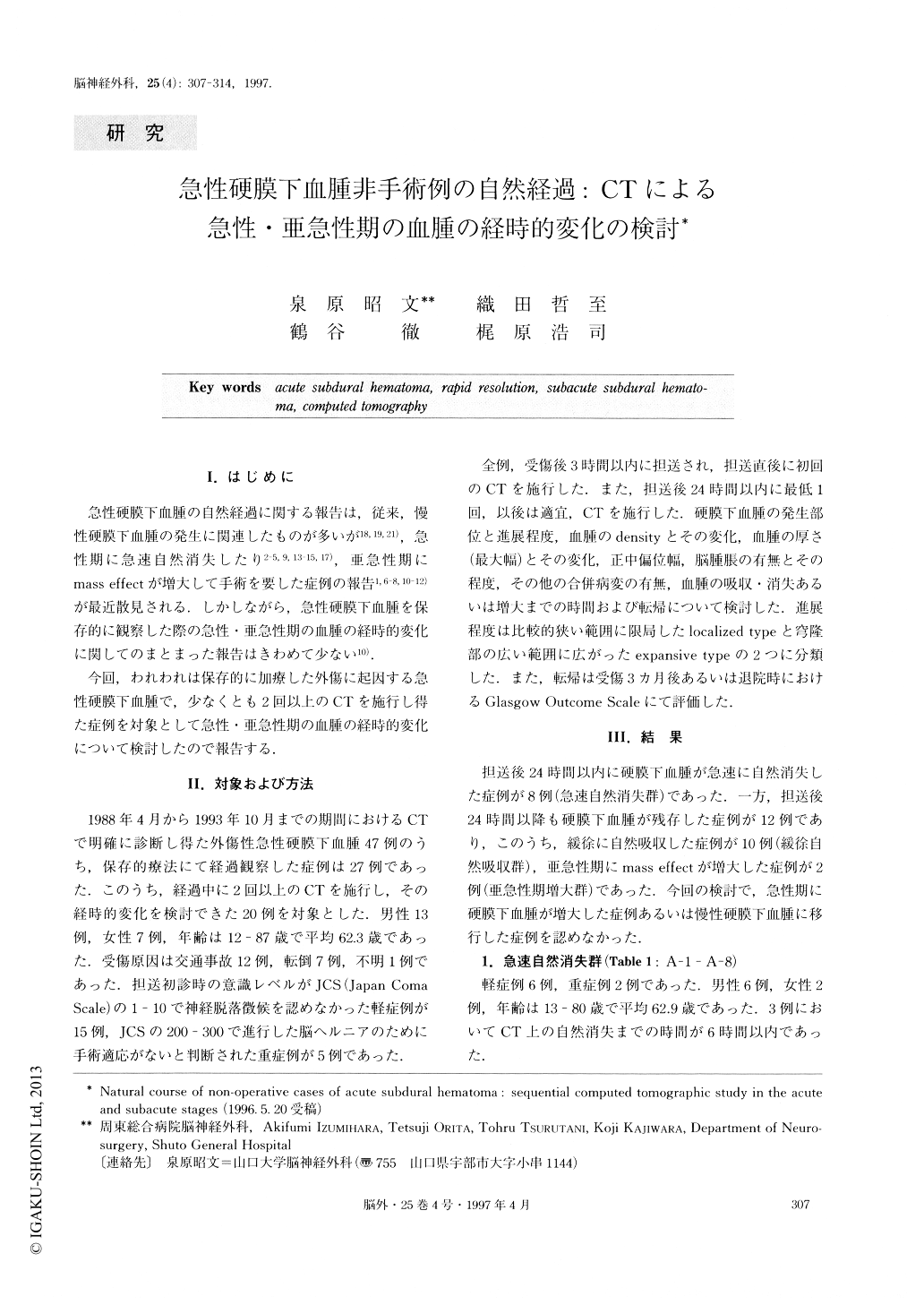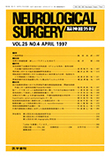Japanese
English
- 有料閲覧
- Abstract 文献概要
- 1ページ目 Look Inside
I.はじめに
急性硬膜下血腫の自然経過に関する報告は,従来,慢性硬膜下血腫の発生に関連したものが多いが18,19,21),急性期に急速自然消失したり2-5,9,13-15,17),亜急性期にmass effectが増大して手術を要した症例の報告1,6-8,10-12)が最近散見される.しかしながら,急性硬膜下血腫を保存的に観察した際の急性・亜急性期の血腫の経時的変化に関してのまとまった報告はきわめて少ない10).
今回,われわれは保存的に加療した外傷に起因する急性硬膜下血腫で,少なくとも2回以上のCTを施行し得た症例を対象として急性・亜急性期の血腫の経時的変化について検討したので報告する.
We have studied 20 non-operative cases of traumatic acute subdural hematoma in the acute and subacute stages by sequential computed tomography (CT). 20 patients were divided into three groups as is shown be-low; 8 patients with rapid complete resolution within 24 hours (rapid resolution group), 10 patients with slow resolution beyond 24 hours, mainly in the sub-acute stage (slow resolution group), and 2 patients worsening clinically due to the increase of subdural fluid collection in the subacute stage (subacute worsen-ing group, what is called, “subacute subdural hematoma”). In the rapid resolution group, CT showed mixed den-sity thin subdural hematoma in 6 patients; delayed subdural effusion in 3 patients; cerebral contusion in 2 patients; and diffuse brain swelling in 2 patients. We reviewed 8 of our cases and 13 reported cases. As a re-sult, we consider that the main pathological mechan-isms of rapid resolution types were, in the elderly, the washout of the hematoma by the leakage of cerebro-spinal fluid (CSF) and, in the young, the compression of the hematoma by brain swelling.
In the subacute worsening group, CT showed, in the acute stage, mixed density thick subdural hematoma with brain atrophy and no intraaxial lesions and, in the subacute stage, the increase of low density subdural fluid collection with marked mass effect. We reviewed 2 of our cases and 19 reported cases. As a result, we re-lated the increase of subdural fluid collection in the subacute stage with the CSF leakage into the subdural space due to the tearing of arachnoid membrane. However, massive CSF leakage into the subdural space, producing marked mass effect, may be joined by other factors such as osmotic pressure gradient or ooz-ing from the outer membrane of the hematoma.

Copyright © 1997, Igaku-Shoin Ltd. All rights reserved.


